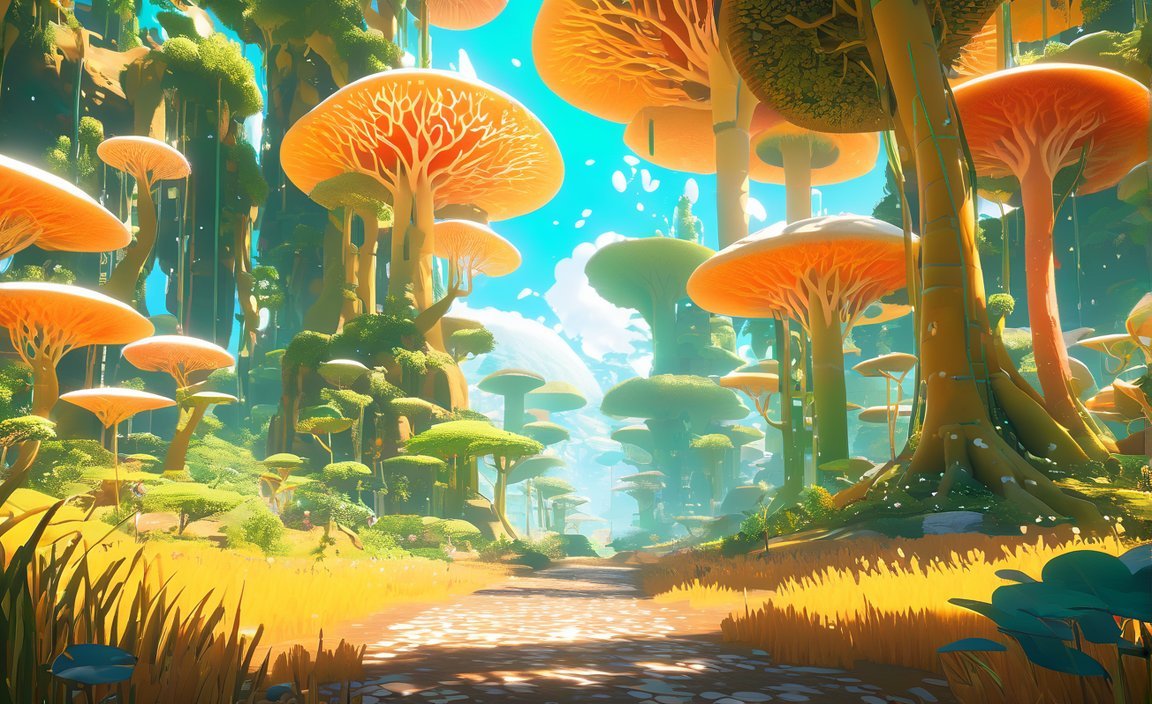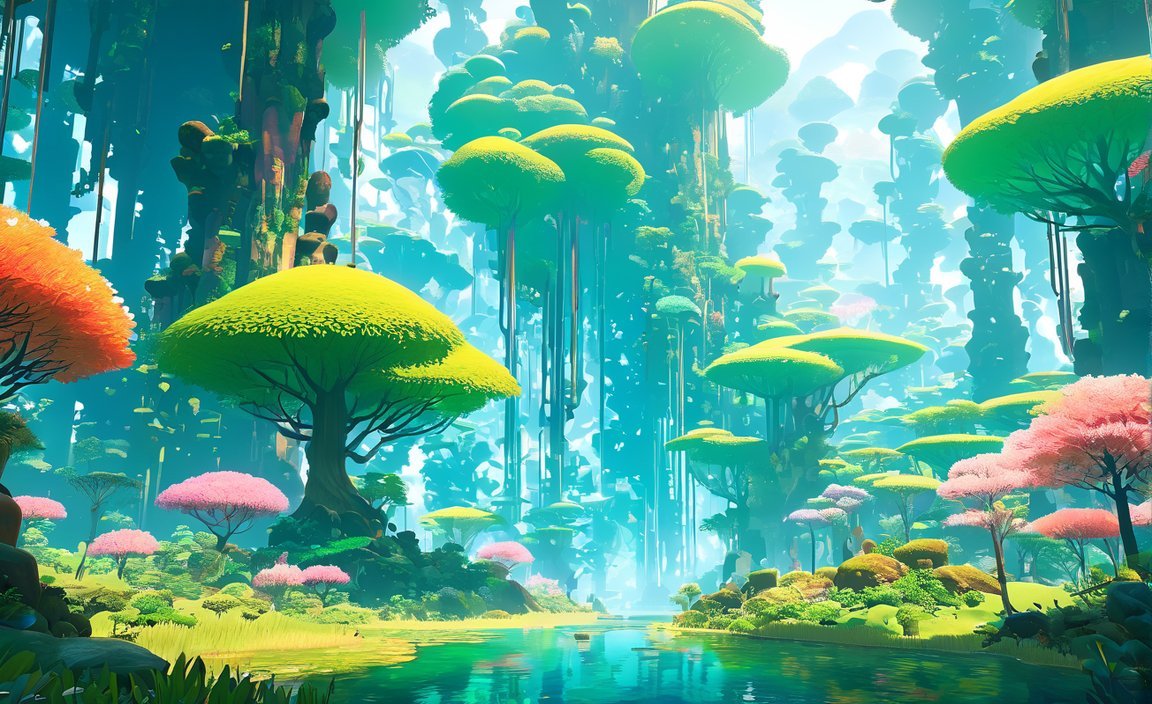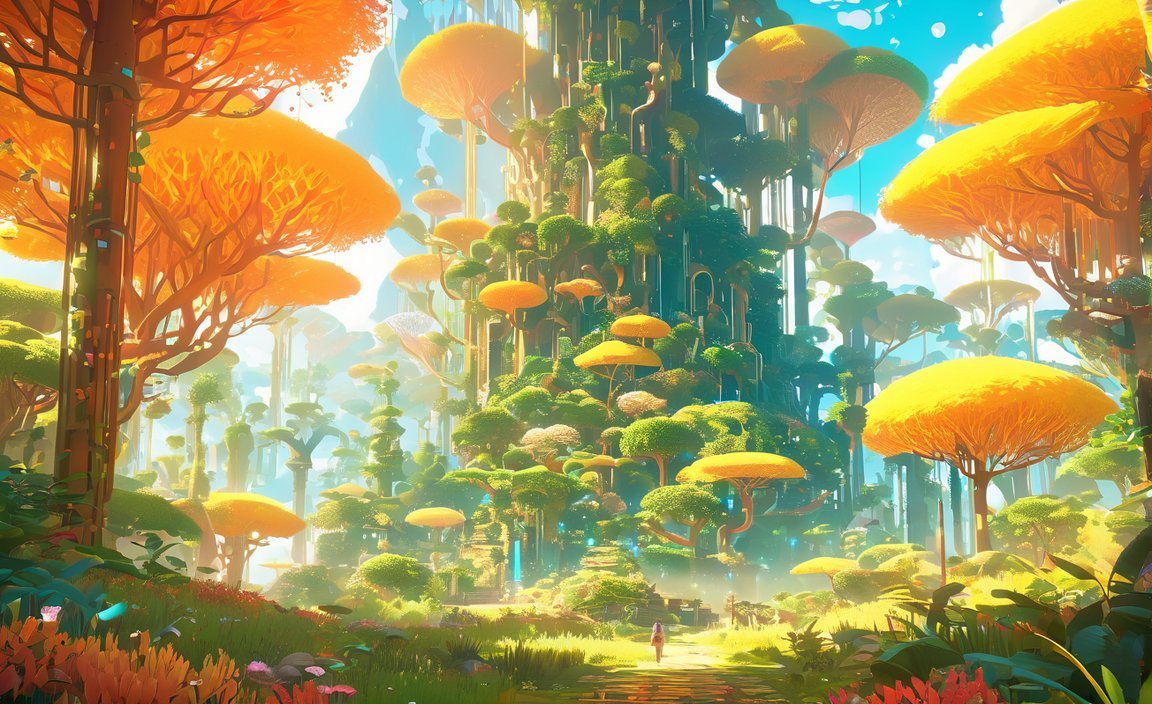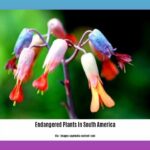The Amazon Rainforest and the Taiga biome are just two examples of the fascinating and diverse biomes that exist in our world. With their unique characteristics, flora, and fauna, these biomes provide a glimpse into the intricacies of our planet’s interconnected ecosystems. In this article, we will explore five fascinating facts about different biomes, from the tropical rainforests teeming with species to the vast stretches of the Taiga. Join us as we dive into the world of biomes and discover the intriguing secrets they hold.

Key Takeaways:
- Biomes are large regions of the world that share similar climate, plants, and animals.
- There are five major types of biomes: desert, grassland, tundra, forest, and aquatic.
- The climate of an ecosystem refers to its typical weather conditions and weather patterns.
- Approximately 1/3 of the earth’s stored carbon can be found in Arctic Tundra soil.
- Biomes can be warm and moist, really hot and dry, or completely frozen.
- Biomes are constantly changing due to natural and human factors.
- Biomes play a crucial role in supporting diverse ecosystems.
- The Arctic Tundra soil holds a significant amount of carbon.
5 Facts About Biomes
Fact 1: Five Major Types of Biomes
One of the most fascinating aspects of our planet’s diverse habitats is the presence of distinct biomes. Biomes are large regions that share similar climate, plants, and animals. There are five major types of biomes: desert, grassland, tundra, forest, and aquatic (National Geographic Society). Each of these biomes supports a unique array of life forms, adapting to the specific conditions found within them.
Fact 2: Arctic Tundra’s Carbon Storage
Did you know that approximately one-third of the Earth’s stored carbon can be found in the Arctic Tundra soil (Treehugger)? This remarkable fact highlights the crucial role that tundra biomes play in regulating our planet’s climate. The frozen soil acts like a vast carbon sink, storing immense quantities of carbon and preventing its release into the atmosphere.
Fact 3: Dynamic Nature of Biomes
Biomes are constantly changing, shaped by natural and human factors. Climate change, forest fires, deforestation, and urbanization are just a few of the factors that contribute to the dynamic nature of biomes (National Geographic Society). These changes can have a profound impact on the delicate balance of life within each biome, highlighting the importance of conservation efforts and sustainable practices.
Fact 4: Biomes as Habitats
Biomes are essential habitats for a wide range of organisms. They provide shelter, food, and water for countless species, making them the most important habitats on our planet (Treehugger). From the lush rainforests teeming with biodiversity to the barren deserts inhabited by resilient flora and fauna, biomes are key to sustaining life in all its forms.
Fact 5: Variety within Biomes
Although biomes may share similar characteristics, there exists a remarkable variety within each biome. For example, some grasslands may be vast prairies stretching as far as the eye can see, while others may be dotted with trees and shrubs, creating a savannah-like landscape (National Geographic Society). This diversity within biomes showcases the intricacies and adaptability of the natural world.
In conclusion, biomes are intriguing ecosystems that play a crucial role in supporting diverse life forms. Five major types of biomes exist, including desert, grassland, tundra, forest, and aquatic. The Arctic Tundra soil stores a significant amount of carbon, contributing to our planet’s climate regulation. Biomes are dynamic and constantly changing due to natural and human factors. They serve as vital habitats for numerous species and showcase a remarkable variety within their boundaries. By understanding and appreciating the intricate nature of biomes, we can strive towards their conservation and ensure the preservation of our planet’s rich biodiversity.
Sources:
– National Geographic Society. Biomes
– Treehugger. 10 Amazing Facts About Land Biomes
Did you know that snapping turtles can weigh up to 75 pounds? Learn more fascinating facts about snapping turtles here: 5 facts about snapping turtles.
Explore the intriguing world of temperate deciduous forests and discover five incredible facts about them: 5 facts about temperate deciduous forest.
Uncover the wonders of temperate forests by checking out these five interesting facts: 5 facts about temperate forest.
Curious about the desert region in California? Click here to find out five captivating facts: 5 facts about the desert region in California.
The Taiga Biome: Exploring the Largest Terrestrial Biome
The Taiga biome, also known as the boreal forest or coniferous forest, is a captivating ecological wonderland that extends across vast areas of Europe, North America, and Asia. With its breathtaking landscapes and unique flora and fauna, the Taiga biome offers endless opportunities for discovery and exploration. In this article, we will dive into the fascinating world of the Taiga biome and unravel five intriguing facts that make it the largest terrestrial biome on our planet.
Fact 1: A Natural Haven of Unbroken Forest Ecosystems
The Taiga biome flourishes as a sanctuary for forest ecosystems, where the habitat plant community creates an undisturbed natural landscape. Here, one can witness the captivating beauty of unbroken forests, free from major forms of human development or habitat fragmentation[^1^].
Fact 2: The Vastness of the Taiga Biome
Stretching across expansive territories of Europe, North America, and Asia, the Taiga biome asserts its dominance as the largest terrestrial biome on Earth[^2^]. From the breathtaking forests of Canada to the enchanting landscapes of Siberia, the Taiga biome encompasses an astounding expanse of land, encapsulating diverse regions and climates.
Fact 3: The Evergreen Tapestry of Coniferous Trees
In the Taiga biome, the dominance of evergreen coniferous trees creates an enchanting backdrop that sets it apart from other biomes. Known as the boreal forest or coniferous forest, the Taiga is characterized by the lush presence of spruce, fir, and pine trees, which stand tall with their needle-like leaves even in the harshest winters[^7^].
Fact 4: Permafrost and its Unique Divisions
The taiga biome demonstrates the wonders of permafrost – a condition where the soil remains either completely or partially frozen throughout the year. The permafrost in the Taiga varies around the world and is classified into two distinct types: continuous and discontinuous permafrost. These frozen soils play a crucial role in shaping the unique characteristics of the Taiga biome[^1^].
Fact 5: A Haven of Endurance and Adaptation
Despite its grandeur, the Taiga biome receives relatively low precipitation, making it one of the driest places on Earth. On average, it only receives up to 1 meter of precipitation per year[^1^]. Yet, life thrives in this challenging environment. The flora and fauna of the Taiga have developed remarkable adaptations to survive and flourish amidst the evergreen forests and frigid temperatures.
Key Takeaways:
- The Taiga biome, also known as the boreal forest or coniferous forest, is the largest terrestrial biome on Earth[^2^].
- The Taiga biome is characterized by unbroken forests and the absence of major human development or habitat fragmentation[^1^].
- Evergreen coniferous trees, such as spruce, fir, and pine, dominate the Taiga biome[^7^].
- Permafrost, which includes both continuous and discontinuous permafrost, adds to the unique geological features of the Taiga biome[^1^].
- Despite its low precipitation, the Taiga biome is teeming with life, showcasing the adaptability and endurance of its flora and fauna[^1^].
Half the world’s species live in tropical rainforests.
Tropical rainforests are truly captivating ecosystems, bustling with life and teeming with biodiversity. These biomes are home to a staggering number of plant and animal species, making them a treasure trove of natural wonders. Let’s delve into the fascinating world of tropical rainforests and uncover some intriguing facts.
The Most Biologically Diverse Ecosystems
It’s mind-boggling to think that half the world’s species live in tropical rainforests. These lush environments are the epitome of biodiversity, housing a vast array of plants and animals. In fact, tropical rainforests contain more species than any other terrestrial ecosystem on the planet[^4^]. From the towering emergent trees to the bustling forest floor, every layer of the rainforest is brimming with life and intricate ecological connections.
The Mighty Amazon Rainforest
When we think of tropical rainforests, the majestic Amazon comes to mind. As the largest tropical rainforest in the world, its sheer size and ecological richness are awe-inspiring. Within its sprawling expanse, the Amazon rainforest boasts approximately 40,000 plant species, nearly 1,300 bird species, 3,000 types of fish, 427 mammal species, and a staggering 2.5 million insect species[^5^]. These numbers represent only a fraction of the immense biodiversity harbored within this remarkable biome.
A Haven for Unique Species
Tropical rainforests are home to a myriad of captivating creatures. Monkeys swing through the dense canopy, jaguars prowl stealthily beneath the trees, toucans flaunt their vibrant plumage, and tree frogs add a splash of color to the forest landscape[^11^]. The incredible variety of species found in tropical rainforests can be attributed to the abundance of resources and the complex web of interactions that exist within these ecosystems. It’s a living paradise that continuously enthralls biologists and nature enthusiasts alike.
The Battle for Conservation
While tropical rainforests are teeming with life, they also face significant threats. Logging, mining, and cattle ranching pose severe challenges to their survival[^7^]. As custodians of our planet, it is crucial that we take action to protect these invaluable ecosystems. Supporting organizations dedicated to rainforest conservation, practicing sustainable agricultural methods, and reducing the consumption of products linked to deforestation are just a few ways we can contribute to preserving these vital habitats[^9^].
Exploring the Layers of the Rainforest
To truly appreciate the wonders of tropical rainforests, we must understand their unique structure. These biomes consist of distinct layers, each playing a crucial role in supporting the biodiversity within. From the towering emergent trees that emerge above the canopy layer to the dense understory layer and the ever-fascinating forest floor, the rainforest ecosystem is a carefully balanced and interconnected web of life[^10^]. The layers create niches for various species, illustrating the incredible adaptability and resilience of nature.
Key Takeaways:
- Tropical rainforests are home to an astounding amount of biodiversity, with half the world’s species residing in these ecosystems.
- The Amazon rainforest, the largest tropical rainforest, showcases the remarkable richness of life, hosting a multitude of plant and animal species.
- To protect tropical rainforests, it is essential to support conservation efforts, adopt sustainable practices, and reduce consumption of products linked to deforestation.
- The diverse layers of the rainforest, including the emergent, canopy, understory, and forest floor, provide unique niches for a wide range of species.
[Citation]
[^4^]: National Geographic Society
[^5^]: National Geographic Society
[^7^]: National Geographic Society
[^9^]: Rainforest Action Network
[^10^]: Animal Corner

FAQ
Q1: What is a biome?
A1: A biome is a large region of the world with similar climate, plants, and animals that share the same habitat.
Q2: Which are the five major types of biomes?
A2: The five major types of biomes are desert, grassland, tundra, forest, and aquatic.
Q3: What is the largest terrestrial biome in the world?
A3: The largest terrestrial biome in the world is the taiga biome, also known as the boreal forest or the coniferous forest.
Q4: How many vine species are found in the tropical rainforest?
A4: There are over 2,500 different vine species in the tropical rainforest, some with a thickness that equals the circumference of a human being.
Q5: Where is the world’s largest tropical rainforest located?
A5: The world’s largest tropical rainforest, the Amazon rainforest, is located in South America.
- SYBAU See You Baby Meaning: Gen Z Slang Evolves - July 1, 2025
- Unlock Your Inner Youth: Lifestyle Secrets for a Vibrant Life - July 1, 2025
- Decode SYBAU Meaning: Gen Z Slang Explained - July 1, 2025






